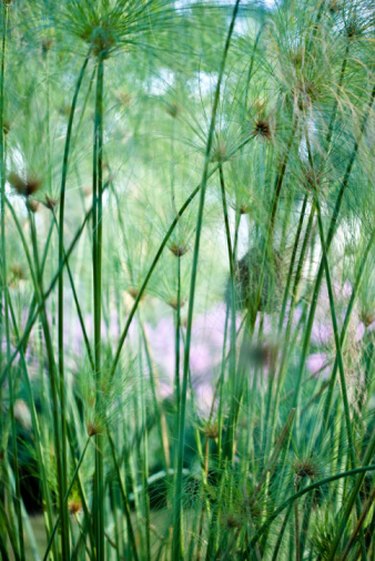
It's common knowledge that some plants can cause serious illness or even death if consumed incorrectly — and some if consumed at all. The horsetail plant, or Equisetum arvense, is a potentially poisonous plant if eaten in large quantities, and for livestock such as horses and cows, can cause serious damage if consumed at all.
Effects on Humans
Video of the Day
The young shoots of the horsetail plant, as well as the pulp that grows within the stems, is actually edible for humans, as long as it is consumed in small quantities. Unlike dandelion greens, it is not generally sold as a food option for humans, and would likely only be consumed in an emergency situation. The plant contains a compound called thiaminase, which breaks down vitamins before they have a chance to enter the body, and therefore leads to ill health. However, a human would have to consume this plant for days on end, with little else in the way of food or water, to become sick.
Video of the Day
Effects on Livestock
Horses and other livestock are much more likely to consume horsetail, since it grows in ditches and meadows where animals naturally find their food. They will likely turn to the horsetail if there is no quality food around. Like humans, they have to consume a lot of the plant to suffer ill effects, but they can consume much more in a single setting, and are more likely to be exposed to it repeatedly. Over-consumption of the plant will result in weakness, twitching and convulsions, lack of coordination and, potentially, death.
Treating Livestock
If your horse or cow is showing symptoms of horsetail poisoning, consult a veterinarian immediately. Animal health professionals will be able to administer supplement doses of the vitamins that the animals are missing as a result of the horsetail poisoning. Keep the livestock away from the area in which they have been feeding until you can identify and remove the horsetail. Provide constant clean water and high-quality feed, which will help flush the poison from the animal's system.
Other Uses
Horsetail is sometimes used in herbal mixes for soups and similar foods, but only in small quantities. As the plant matures, the stems become very stiff and abrasive. Peeling the stem reveals the edible pulp inside. Native Americans and early settlers used the rough exterior of the stems to scrub out cooking pots and pans. If you try this, rinse well to remove traces of the plant, and do not use the plant to clean any utensils used for livestock.